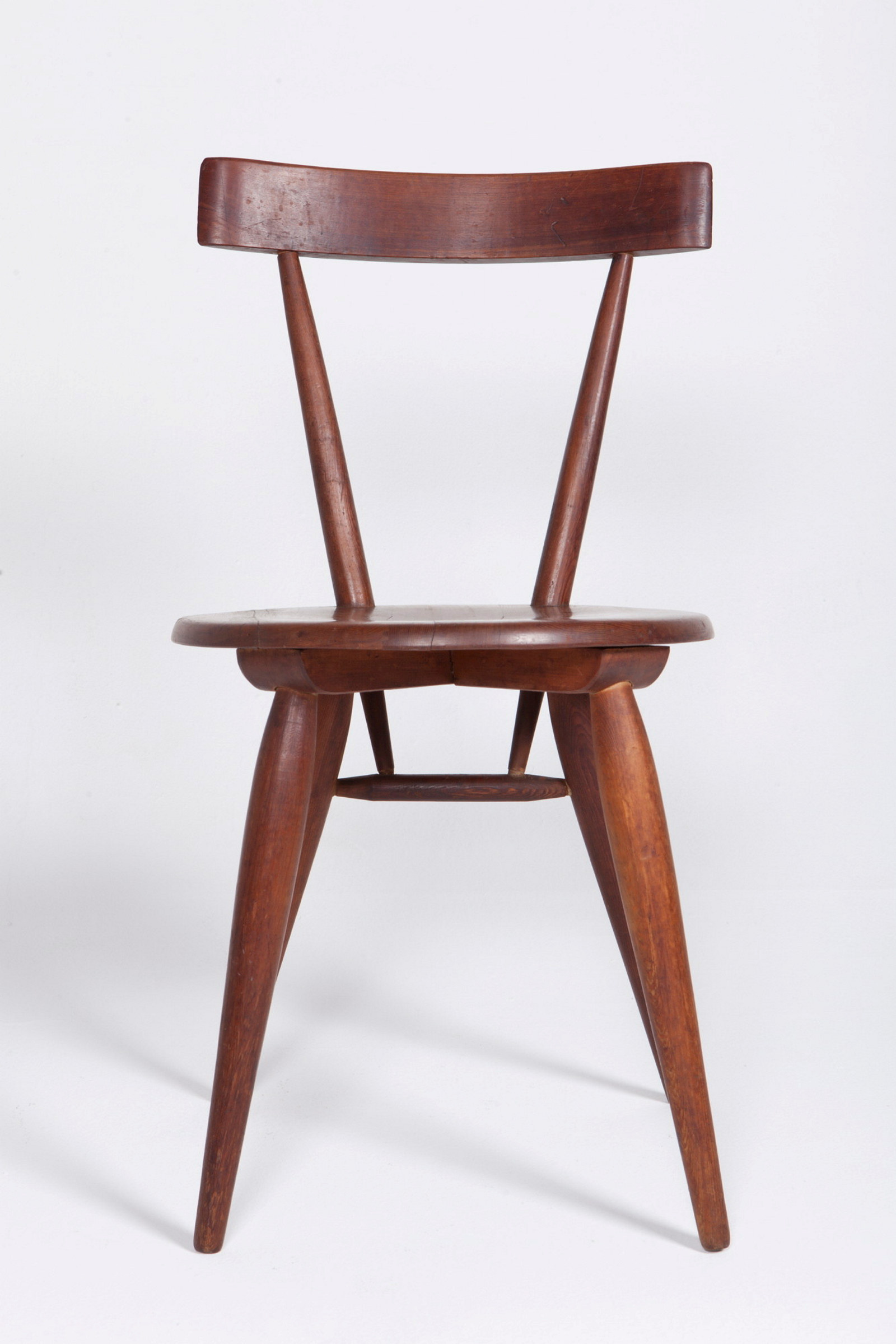Flat-pack modernist chair
It's flat-packed but it’s not an IKEA product; it's Australian made!
Before IKEA began making its now famous flat-pack furnishings in 1953 and well before its products were first imported into Australia, Timber Packs Pty Ltd and other Australian manufacturers were producing their own range of assemble-it-yourself furniture, more commonly refered to at the time as 'ready-cut' or 'prefab'.
Making your own furniture had long been a popular activity but ready-to-assemble furniture was an attractive alternative, especially immediately after World War II, as it was inexpensive and did not require the level of dexterity or amount of time needed for do-it-yourself furniture. In fact, the modern postwar home housed less furniture than the prewar home, and it generally had become lighter in colour and style. Furniture forms, influenced by modernist ideas on efficiency of space and simplicity in design, were often reduced to their basic functional components. This philosophy suited the designs and type of manufacturing required to make the component parts for ready-to-assemble furniture.
In June 1948, an advertisement for Timber Packs stated that ‘complete sets of machined, bandsawn, shaped and sanded ready-to-assemble parts are now available’ for toys and furniture. Eventually the range expanded to include chairs, tables, lounge suites, bookshelves and garden furniture. By 1951, the Fler furniture factory, operated by Fred Lowen and Ernest Rodek, took over production of the Timber Packs components. One of the first new pieces of furniture Fler began to manufacture for Timber Packs Pty Ltd was the Fred Ward-designed side chair. Fler had originally made a very similar chair but of more complex design in 1946/47 called the DC1, which was also designed by Fred Ward and sold through the Myer department store. Ward reconfigured and simplified his original DC1 design to allow it to be produced in its component parts at low cost and be assembled at home by the customer.
